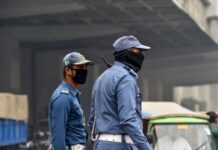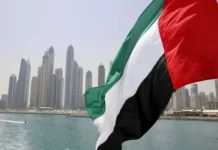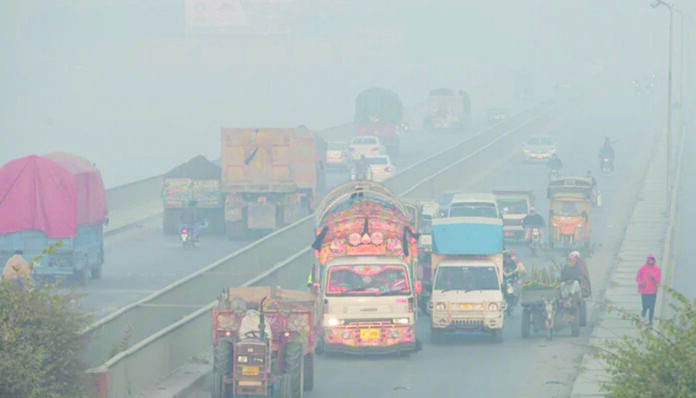A holiday was announced in Lahore and its surrounding areas for Friday, November 10, in an effort to alleviate the smog that has shrouded the region in recent weeks. Smog, the infamous mixture of fog and smoke, is slowly but steadily sucking the life out of our bodies. With each passing year, the issue of smog is becoming more serious. According to research published by the University of Chicago, the average age of the people of Lahore is decreasing by seven years annually. For children, ingesting the current pollution levels is equivalent to smoking 30 cigarettes a day. Unfortunately, the remedial actions being taken by the stakeholders do not reflect the seriousness of the situation.
After all these years, the solution remains a mystery for the policymakers in Pakistan. Every year we come up with a new yet shortsighted plan to tackle the smog issue like a ban on stubble burning, temporary shutdown of traditional brick kilns, or the closure of schools and offices for an additional day to reduce vehicular traffic and associated pollution. Remaining true to tradition, this year the government announced a holiday on Friday as a smog-controlling strategy, and like each year, I put forward the same question: Do the actions being taken provide a long-term and sustainable solution to this problem?
Short-term thinking is one of the greatest enemies of good governance, and this is true in the case of the remedies being taken for controlling the smog situation in Punjab. Even though burning of agricultural waste, vehicular emission, and industrial pollution are commonly the main causes of smog, shutting down factories or announcing holidays are not sustainable solutions to this problem because of the associated social costs. The policymakers require an ESG-centric approach for tackling the smog issue.
Strategic decision-making centered on the holistic combination of Environmental, Social, and Governance (ESG) factors can provide a framework for minimizing smog in an environmentally and socially sustainable manner. This year, the Punjab’s Environmental Protection Agency (EPA) has issued Smog Regulations stating the SOP for various economic sectors and penalties for pollution generation. This is definitely a step in the right direction, but what is vital to understand is that sustainable decision-making aims to create a synergistic blend of environmentally friendly and socially responsible initiatives.
Closing polluting factories or brick kilns or reducing the working days of businesses may create economic losses and layoffs and thus the associated social cost for the stakeholders.
Green banking is a potentially viable solution to this problem through which the banking industry may provide green financing at a low interest rate to eco-friendly business activities. Banks can play a pivotal role in the fight against smog by fostering the development of environmentally and socially sustainable economic sectors through ESG strategies. Green banking can remove smog by financing the conversion of polluting activities to eco-friendly business operations and the development of green business ventures.
Green financing may be provided towards the conversion of traditional brick kilns to zig-zag technology, manufacturing of electric vehicles, sustainable agricultural practices, and other green economic sectors like green construction, sustainable textile, renewable energy generation & distribution, etc.
Similarly, good governance, under the ESG ideology, requires the integration of eco-friendly features in new developmental projects like the construction of anti-smog or smog-free towers in business districts such as the Central Business District (CBD) in Lahore. These are structures designed as large-scale air purifiers to reduce smog and use renewable energy sources for power generation. Banks can provide green financing for the construction of anti-smog towers in various public places with high levels of pollution to combat smog.
The EPA can work with other stakeholders in this regard by monitoring the Air Quality Index (AQI) and identifying potential areas for the installation of anti-smog towers. Other remedial actions may focus on the adoption of Regenerative Agriculture practices which can provide an eco-friendlier alternative to stubble burning and increase soil productivity. According to the World Economic Forum, more than half of the world’s agricultural land is degraded which leads to productivity losses of approximately US $ 400 billion annually. This may create a real threat to global food security. Green Financing may be provided to various regenerative agricultural projects, such as crop rotation and relay planting, that can lessen the instances of stubble burning and thus smog.
Sustainability is not just about adopting the latest energy-efficient technologies; rather, it is the responsibility of every individual every day. It is not possible without changing our behavior and mindset to reduce resource consumption and restore the natural balance of the eco-system. The development of an environmentally sustainable economy through good governance will ensure the creation of a socially sustainable ecosystem. This can only be possible through effective public-private partnerships aimed towards the development of a sustainable economy.
It is about time that we disembark the bandwagon of myopic, short-term decision-making and focus our energies towards long-term sustainable ESG planning. Otherwise, it will be nearly impossible to find a way out of this smog.





















